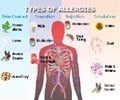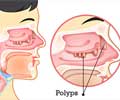Lynda Eastham, 51, had been suffering from chronic sinusitis ever since she was a child, was cured by a new procedure called balloon sinuplasty,to unblock her painful sinuses.
Lynda Eastham, 51, had been suffering from chronic sinusitis ever since she was a child, was cured by a new procedure called balloon sinuplasty,to unblock her painful sinuses.
The 12 sinuses located around the head drain away the mucous secretions keeping the nasal passages moist. But if this fluid is not drained away because of narrowing, it often builds up leading to infections.Lynda had two sinus operations but her condition remained the same.
"I had quite a bit of pain and discomfort from the operations but I was hoping that I would at last have some relief. So when the blocked sinuses and infections remained I was very disappointed," the Daily Express quoted her as saying.
"It wasn't pleasant coping with sinusitis for all those years but I really couldn't afford to take weeks off work each year."
And then last autumn her consultant Atef El-Kholy suggested her to undergo balloon sinuplasty.
The technique is simple - a deflated balloon is attached to a catheter and guided into the sinus through the nose. Thereafter, the balloon is inflated and the pressure exerted by it causes the bones and tissue in the sinus to widen and remain that way.
Advertisement
"Although the conventional operation is common, there have not been many advances in recent years. For an operation classed as minor surgery, there is a fair degree of discomfort and quite a long recovery period," he added.
Advertisement
Lynda has finally got rid of pain and infections.
She said: "There was almost no discomfort afterwards and I was fine in a few days."
"Before being offered balloon surgery I was facing my third conventional operation with no certainty that it would work. This is the first winter for years that I've not been plagued by sinusitis," Lynda added.
Mr El-Kholy said: "The results are so good that I think colleagues will be persuaded to try this type of surgery.
"It's a painless procedure that seems to work. We keep patients in for a few hours after the operation to make sure there are no problems, and then allow them home."
Source-ANI
TRI












